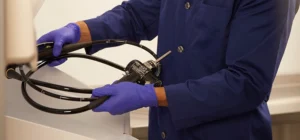Background
Falls with injury continue to be a costly burden to health care facilities and patients.1 The purpose of this project was to evaluate a low bed to reduce both the number of falls and the severity of injuries from those falls.
Current practice within the VA Community Living Center (CLC) network is to leave at least one side rail down at all times as to not be considered a restraint. Patients at high risk for pressure injuries (PIs); patients with Stage 3, 4, Unstageable, or Deep Tissue Injury (DTI); or patients with post-operative surgical repair are often placed on air-fluidized therapy (AFT).2,3,4
AFT frames do not go low enough to prevent falls with injury. In a 6-month period from Sept. 2018 through Apr. 2019, the facility reported two resident falls from an AFT bed: a 76-year-old male and a 62-year-old female. The male resident suffered a subdural hematoma and died from his injuries. The female resident fell out of bed and sustained bruises and pain.
These patients had extremely high levels of acuity and were quite immobile. Patient comorbidities included: Cerebrovascular accident with left-sided hemiparesis, bilateral foot drop, status post coronary artery bypass graft surgery, depressive disorder, congestive heart failure, failure to thrive, diabetes, periphery arterial disease, dementia, and pressure injuries.
Methods
After a review of current contracted vendors, the decision was made to switch from AFT beds to low bed frames with an immersion low air loss (LAL) support surface. In the review process, the new frame/surface combination provided a significant cost savings over AFT.
All patients were screened upon admission to include their medical history, a skin assessment, and fall risk. Four patients were placed on low beds with immersion LAL surface—each of them had multiple pressure injuries of varying severity (Stage 3, 4, Unstageable, or DTI).
Results
Since the implementation of the new low bed frame and immersion LAL surface in Apr. 2019, the facility has experienced no patient falls. Additionally, the patients were able to heal their pressure injuries with significant cost reduction.

Conclusion
Based on the initial results, the facility has changed its protocols— moving away from air-fluidized therapy, and now using low bed frames with immersion LAL surfaces for residents at risk of falling, at risk for developing pressure injuries, or for those needing treatment of existing PIs.

